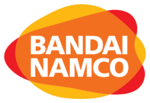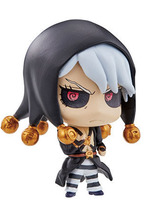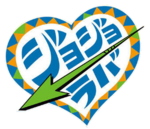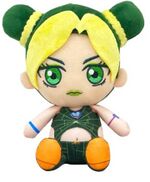Bandai Namco
Bandai Namco[a] is a Japanese entertainment company based in Minato, Tokyo that was formed by the merger of toy manufacturer, Bandai Co., Ltd.,[b] and video game developer, Namco Ltd. on March 31, 2006.
The company is split into four main subsidiaries: Bandai, a toy manufacturer originally founded by Naoharu Yamashina on July 5, 1950, Bandai Namco Amusement, an arcade cabinet manufacturer originally founded by Masaya Nakamura on June 1, 1955, Bandai Namco Entertainment, a video game developer and publisher founded in January 2006, and Bandai Namco Pictures, a Japanese animation and production studio found in April 2015, which is a spinoff of Sunrise Inc.
History
Bandai
Bandai was founded by Naoharu Yamashina on July 5, 1950, as Bandai-Ya (萬代屋) in Taito, Tokyo, when it spun off from his family's textile business. Their first original toy, Rhythm Ball, a ball with bells inside, was introduced in September of the same year. In March 1951, Bandai began exporting toys to foreign markets, becoming one of the earliest Japanese companies to do so. In 1955, the company became the first in the toy industry to have a quality assurance system, with the 1956 Toyopet Crown model car being the first toy approved. Bandai-Ya was renamed to Bandai in July 1961.
In the 1960s, the company began to expand its overseas operations and opened an office in New York City. Bandai met considerable success when it introduced action figures based on the anime Astro Boy in 1963. The toy line's success prompted the company to move away from manufacturing original toys to making tie-in products as well as funding various television series. In May 1980, Makoto Yamashina, son of the founder, became the president of Bandai. Bandai was one of the first third-party developers for the Nintendo Family Computer. In 1986, they released the Power Pad, a floor mat accessory for the Famicom. In February 1989, Bandai acquired arcade game developer Coreland and reorganized it into Banpresto. In 1988, Bandai launched the first Carddass card vending machines, which were based on the Saint Seiya anime. Many other popular franchises were made into trading cards, including JoJo's Bizarre Adventure, with the Adventure Battle Card, Crusade, and JoJo's Bizarre Hanafuda card games.[1] In 1996, MegaHouse also became a subsidiary of Bandai.
In January 1997, Bandai announced its planned merger with Sega, which would establish a new company named Sega Bandai Ltd. In May, the merger was called off due to growing opposition from Bandai's employees. President Makoto Yamashina took responsibility for its failure and stepped down from his position. Bandai and Sega instead agreed to a business alliance.[2] In 2005, Bandai merged with Namco, becoming a subsidiary of Bandai Namco Holdings.[3]
Bandai Namco
In February 2005, in the wake of their 50th anniversary, Namco announced their intent to merge with Bandai to form Bandai Namco Holdings. The merge was finalized on September 25, creating the third-largest video game publisher in Japan by revenue.[4] Bandai purchased Namco for US$1.7 billion, with Namco receiving 43% of shares and Bandai receiving the other 57%. Both companies in a joint statement cited Japan's decreasing birth rates and advancements in technology as the reason for the merge, and to increase their relevance to newer audiences. Both companies worked independently under the newly formed Bandai Namco Holdings until March 31, 2006, when their video game operations were merged to form Namco Bandai Games.[5][6][7] Earlier on January 26, Namco Hometek and Bandai Games merged to form Namco Bandai Games America, the North American division.[8][9]
On April 1 2008, Banpresto's video game operations were absorbed by Namco Bandai Games.[10] On 1 April 2009, Bandai Networks, Namco Bandai's mobile phone business, was dissolved and absorbed into Namco Bandai Games.[11] Just prior to the release of Afro Samurai at the end of 2008, the company announced the Surge publishing label.[12] The new label was an attempt at creating a separate identity for the company, aimed at a Western audience desiring more mature themes in game content.[13] Following Afro, early press materials indicated that Dead to Rights: Retribution and Splatterhouse would also be released under the Surge label, but neither game ultimately did; both were released with a retro Namco label instead to reflect the series's legacy.
In 2010, Namco Bandai Games entered the Guinness World Records as the company that released the most TV commercials for the same product within eight hours, broadcasting 100 different commercials for the Nintendo DS game Solatorobo: Red the Hunter on Tokyo MX.[14] In early 2011, Namco Networks was absorbed into Namco Bandai Games America, effectively consolidating Namco Bandai's American console, handheld, and mobile video game development operations.[15] On April 2 2012, Namco Bandai Games spun off its development operations into a new company called Namco Bandai Studios. The new company was spurred by Namco Bandai's interest in faster development times and tighter cohesion between disparate development teams. It comprises approximately 1,000 employees, who were already part of Namco Bandai.[16]
In March 2013, Namco Bandai Games established two new game studios. The first, Namco Bandai Studios Singapore, is Namco Bandai's "leading development center" in Asia and develops game content for the Asia Pacific market. The second studio, Namco Bandai Studios Vancouver, works on online social games and game content development for North America and Europe, and is part of the Center for Digital Media (CDM).[17] In July 2013, Namco Bandai Partners (NBP), which used to oversee the PAL distribution network since September 2012, merged with Namco Bandai Games Europe (NBGE) in order to push distribution and publishing into one entity, Namco Bandai Games Europe (NBGE).[18]
In 2014, Namco Bandai Games and Namco Bandai Studios became Bandai Namco Games and Bandai Namco Studios, respectively. The change unified the brand internationally in order to increase the "value" and "appeal" of the name.[19] The full company name was changed to Bandai Namco Entertainment on 1 April 2015.[20] On April 1 2018, the amusement machine business division of Bandai Namco Entertainment was transferred over to sister company Bandai Namco Amusement.[21][22]
Credits
- Phantom Blood (film) (As Bandai)
- Production Company
- JoJo's Bizarre Adventure: Stardust Crusaders
- Graphics Model Cooperation (eps 26-27, 30-35, 46-48) (OP 1-2)
- JoJo's Bizarre Adventure: Diamond is Unbreakable
- Graphics Model Cooperation (ep 18)
- JoJo's Bizarre Adventure: Golden Wind (As Bandai Namco Pictures)
- 2nd Key Animation (eps 17-20, 25-26, 29, 33)
- In-between Animation (eps 10, 19, 35, 39)
- Thus Spoke Kishibe Rohan OVA (As Bandai Namco Pictures)
- In-between Animation (ep 9)
- JoJo's Bizarre Adventure: Stone Ocean
- 3DCGI (OP 1)
- 2nd Key Animation: (ep 14) (As Bandai Namco Pictures)
JoJo-Related Series
Games
- JoJo's Bizarre Adventure: Phantom Blood (2006)
- Adventure Battle Card (2007) (As Bandai)
- JoJo's Bizarre Hanafuda (2011) (As Namco Bandai Games)
- All-Star Battle (2013)
- Stardust Shooters (2014)
- Eyes of Heaven (2015)
- Diamond Records (2017)
- JoJo's Pitter-Patter Pop! (2018)
- Last Survivor (2019) (As Bandai Namco Amusement)
- All-Star Battle R (2022)
Figures
Other
- Famicom Jump: Hero Retsuden (1989) (As Bandai)
- Famicom Jump II: Saikyo no Shichinin (1991) (As Bandai)
- Cult Jump (1993) (As Bandai)
- J-Stars Victory VS (2014)
- Weekly Shonen Jump: Ore Collection! (2017)
- Jump Force (2019)
See also
Notes
References
- ↑ カードダスドットコム 公式サイト | カードダスとは
- ↑ Grant, Tina (2003). International directory of company histories. Vol. 55
- ↑ 歴史 | バンダイ公式サイト
- ↑ http://www.gamespot.com/articles/bandai-namco-to-merge/1100-6123385/
- ↑ http://www.1up.com/news/bandai-namco-finalize-merger-details
- ↑ https://www.bandainamco.co.jp/en/releases/images/3/26785.pdf
- ↑ url=http://www.bandainamco.co.jp/ir/library/pdf/communication/2006_report.pdf
- ↑ http://uk.ign.com/articles/2006/01/04/namco-bandai-complete-north-american-merger
- ↑ http://www.gamespy.com/playstation-2/soul-calibur-iii/678772p1.html
- ↑ http://www.siliconera.com/2007/11/09/banpresto-absorbed-by-namco-bandai
- ↑ http://www.katanaxtreme.com/anime_news/details.aspx? ;– Namco Bandai Games Inc. to Take Over Bandai Networks Co., Ltd.
- ↑ http://kotaku.com/5102115/namco-bandai-needs-westerners-plans-surge
- ↑ http://www.gamasutra.com/php-bin/news_index.php?story=22589
- ↑ https://www.guinnessworldrecords.com/world-records/most-tv-commercials-for-the-same-product-(8-hrs)-regionalfree-to-air
- ↑ http://www.gamesindustry.biz/articles/namco-bandai-games-america-namco-networks-merger-now-it-s-all-just-namco-bandai-games-america
- ↑ http://www.engadget.com/2012/02/10/namco-spins-off-internal-dev-studios-into-namco-bandai-studio/
- ↑ https://web.archive.org/web/20140218225422/http://gematsu.com/2013/04/namco-bandai-opening-singapore-and-vancouver-studios
- ↑ http://www.edge-online.com/news/namco-bandai-completes-merger-of-publishing-and-distribution-businesses/
- ↑ http://uk.ign.com/articles/2014/01/24/namco-bandai-changing-name-to-bandai-namco
- ↑ 2014-12-16, Bandai Namco Games changing name to Bandai Namco Entertainment, Gematsu
- ↑ https://www.bandainamco.co.jp/cgi-bin/releases/index.cgi/file/view/6091?entry_id=5509
- ↑ Corporate History, Bandai Namco Entertainment








